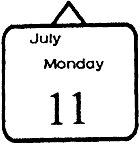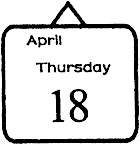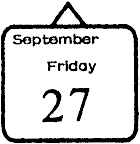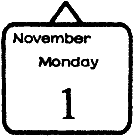| 仔细看日历,填空。1.—Whatdayisit? —It'sMonday,July .2.—What ? —It's .3. —W? —.4. —W?— .5. —W ? — .6. —W?— .-四年级英语 |
|
[db:作者] 2019-08-13 00:00:00 互联网 |
|
|
题文
 |
1. —What day is it?
—It's Monday, July . |
 |
2. —What ?
—It's . |
 |
3. —W ?
— . |
 |
4. —W ?
— . |
 |
5. —W ?
— . |
 |
6. —W ?
— . |
题型:补全对话,情景问答 难度:中档
答案
1. eleventh
2. day is it Thursday April eighteenth
3. What day is it It's Friday September twenty-seventh
4. What day is it It's Sunday February fifteenth
5. What day is it It's Monday November first
6. What day is it It's Wednesday March fourth |
据专家权威分析,试题“仔细看日历,填空。1.—Whatdayisit? —It'sMonday,July .2.—..”主要考查你对 年月日,特殊疑问句 等考点的理解。关于这些考点的“档案”如下:
年月日特殊疑问句
考点名称:年月日 考点名称:特殊疑问句
|
|
http://www.00-edu.com/ks/4/1/17/2019-08-14/1298281.html十二生肖十二星座
|

